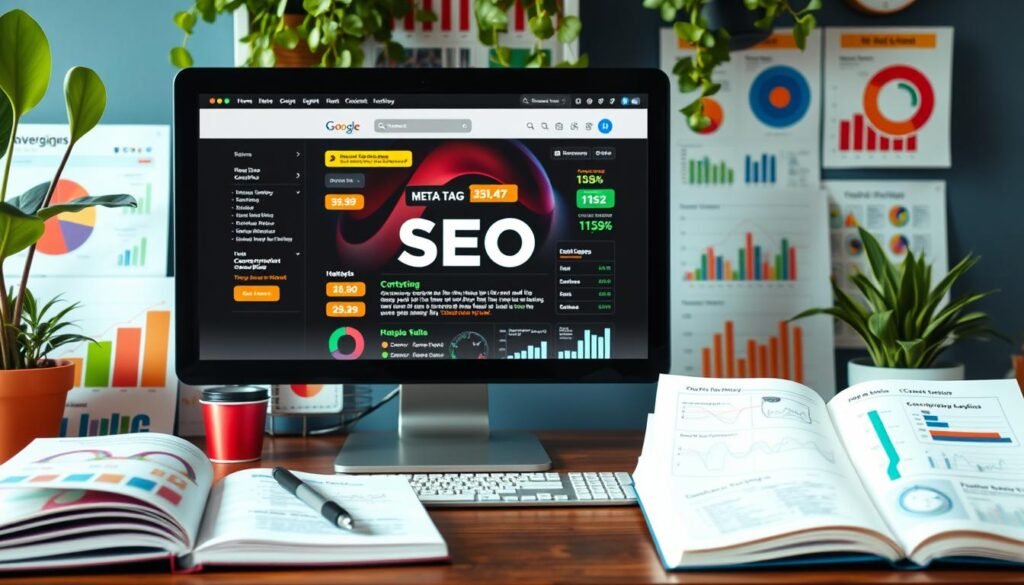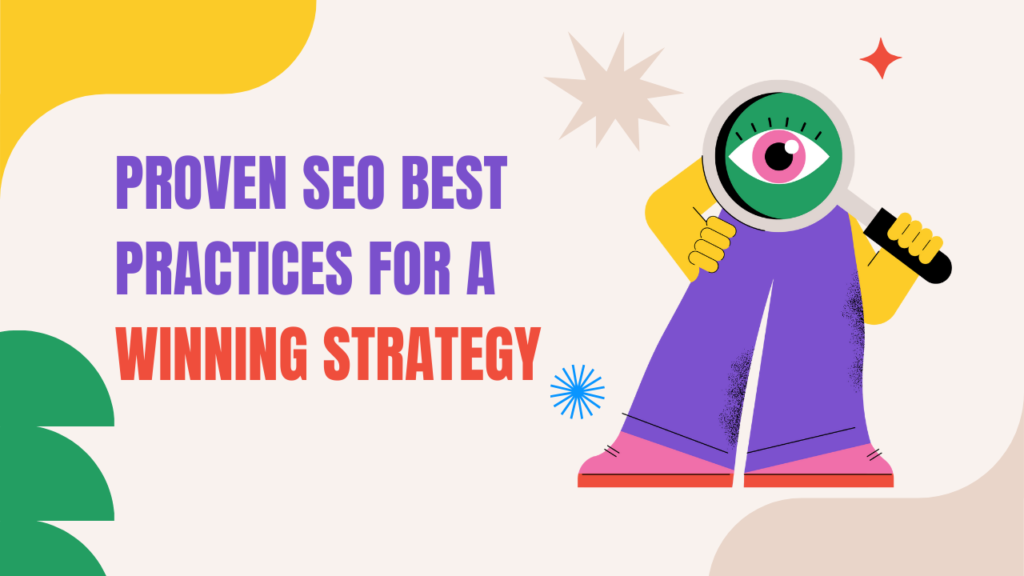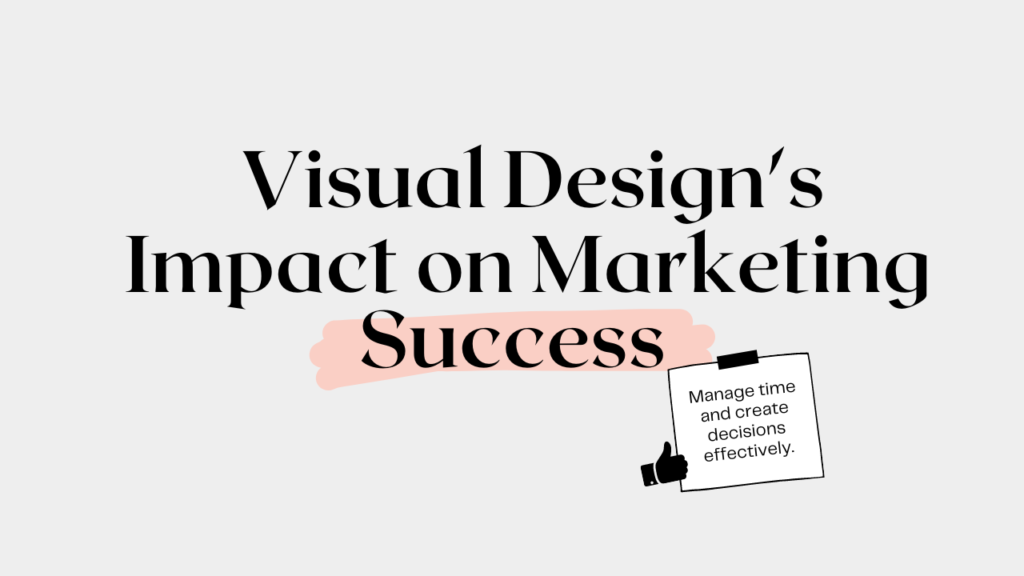SEO Best Practices: Boost Your Website’s Visibility
Did you know that over 90% of online experiences start with a search engine query? This fact shows how vital SEO (Search Engine Optimization) is today. As a website owner, learning SEO best practices is key to getting your site seen by more people. This guide will give you the key strategies to improve your website’s ranking and reach your audience.

Learn how to do keyword research and make your on-page content better. Also, find out how to get high-quality backlinks and improve your site’s structure. These steps will help boost your website’s search engine ranking.
Stay up-to-date with mobile-friendliness, page speed, and content marketing. This way, your brand will be seen as a trusted and leading source in your field.
Join us on this SEO journey. Discover how to increase your website’s visibility, get more qualified leads, and achieve long-term success online.
Keyword Research: The Foundation of SEO Success
Successful SEO starts with deep keyword research. Finding the right keywords matches your business and audience. This makes your content hit the mark and boosts your site’s search engine ranking.
Identifying Relevant Keywords
Start by making a list of keywords that fit your products, services, or info. Include broad terms and long-tail keywords for specific niches.
- Use tools like Google Keyword Planner, Ahrefs, or Semrush for more ideas and to check their search volume, competition, and relevance.
- Choose keywords with a good search volume and lower competition for easier targeting.
- Focus on search intent – know if users want info, directions, or to buy something, and match your content to their needs.
Understanding Search Intent
Knowing search intent is key for keyword mapping and making content. It helps you give users the info they’re looking for.
| Search Intent | Description | Example Keywords |
|---|---|---|
| Informational | Users want general info or answers. | “what is SEO”, “how to do keyword research” |
| Navigational | Users seek a specific website or brand. | “Google”, “Amazon” |
| Transactional | Users are ready to buy or take action. | “buy SEO services”, “SEO agency near me” |
Matching your content with the user’s search intent makes your site more relevant. This draws in better leads and boosts conversions.
On-Page Optimization: Crafting SEO-Friendly Content
On-page optimization is key to making your website stand out. By making your content SEO-friendly, you can boost your site’s visibility and draw in more visitors. This guide will cover the important steps to improve your online presence. You’ll learn how to optimize title tags, meta descriptions, and use header tags effectively.
Optimizing Title Tags for Maximum Impact
The title tag is what first catches the eye of search engine users. It’s important to make these titles engaging and packed with keywords. This helps your pages show up in searches, bringing more visitors to your site.
Crafting Captivating Meta Descriptions
Even though meta descriptions don’t affect rankings, they’re crucial for getting people to click on your site. Write them in a way that sums up the page’s content and makes people want to learn more.
Structuring Content with Header Tags
Using header tags like H1, H2, and H3 helps search engines understand your content better. This makes your site easier for both search engines and people to navigate. It’s a key part of making your content SEO-friendly.
Optimizing Images for Search
Images are a big part of making content engaging, and they can also help with SEO. By optimizing image file names, alt text, and captions, you can get your images to show up in search results. This brings more people to your site.
| On-Page Optimization Element | Best Practices |
|---|---|
| Title Tags | Include target keywords Keep title length under 60 characters Craft compelling and accurate titles |
| Meta Descriptions | Write unique, engaging descriptions Incorporate relevant keywords Keep length under 155 characters |
| Header Tags | Use H1 for the main page title Utilize H2, H3, etc. for subheadings Maintain a logical hierarchy |
| Image Optimization | Optimize file names with keywords Write descriptive alt text Include relevant captions |
By following these on-page optimization tips, you can make your content SEO-friendly. This will help you reach both search engines and your audience. The goal is to balance making your site easy to use with its visibility in searches.

Link Building: Strengthening Your Website’s Authority
Link building is key in SEO. It helps your website get more visible and trusted online. By getting high-quality backlinks, you can boost your search engine rankings. We’ll cover how to link within your site and get authoritative backlinks.
Internal Linking Strategies
Internal linking connects pages on your site. It makes your site easier to use and helps with SEO. Here’s how it helps:
- It spreads link equity, showing search engines your site’s structure and importance.
- It keeps users on your site longer, making them explore more content.
- It makes search engines crawl and index your site better, making it more visible.
Earning High-Quality Backlinks
Backlinks from other sites are crucial for your site’s authority and ranking. Here are ways to get them:
- Guest Posting: Write for other sites in your field. This gets your content seen by new people and can get you backlinks.
- Broken Link Building: Find broken links on other sites and offer a working link from your site. This can get you a backlink and boost your site’s trust.
- Influencer Outreach: Work with influencers or businesses that match your field. Create content together that links to your site.
Using these strategies can make your site more authoritative and visible online. This brings in more targeted traffic and can lead to more conversions.

| Link Building Tactic | Benefits | Potential Challenges |
|---|---|---|
| Internal Linking | Improves user experience Enhances website hierarchy and authority Facilitates efficient crawling and indexing | Maintaining a logical, cohesive internal linking structure Avoiding over-optimization or unnatural link placement |
| Guest Posting | Exposes content to new audiences Earns valuable backlinks from high-authority sites Builds brand awareness and industry credibility | Identifying and securing guest posting opportunities Ensuring the guest post is of high quality and relevance |
| Broken Link Building | Earns backlinks by providing valuable replacement content Improves the user experience on other websites Strengthens website authority and trustworthiness | Identifying relevant broken links on other websites Ensuring the replacement content is high-quality and relevant |
“The quality of your backlinks is more important than the quantity. Focus on earning links from authoritative, industry-relevant websites.”
Site Structure: Paving the Way for Crawlers
A well-structured website is key to success online. How your site is set up affects how search engines see and use your content. By making your site easy to navigate, you help search engines and users find what they need. This can make your site more visible in search results.
Creating a User-Friendly Navigation
Having a user-friendly navigation is important for both your visitors and search engines. A clear structure makes it easy for people to find what they’re looking for. It also helps search engines crawl and index your pages better. Here are some tips for a smooth navigation:
- Put your content into logical groups that match your users’ needs and what they’re searching for.
- Use a menu system with clear categories and sub-categories to help users move around your site.
- Make sure your navigation looks good and works well on all devices and sizes.
- Use internal links to connect related content, making it easier for users and search engines to explore.
By focusing on making your site easy to use and search engine friendly, you build a strong online base. This can lead to more visibility and engagement.
| Feature | Benefit |
|---|---|
| Logical Content Organization | Enhances user navigation and search engine crawlability |
| Intuitive Menu Structure | Improves user experience and accessibility |
| Responsive Design | Ensures seamless browsing across devices |
| Strategic Internal Linking | Facilitates user and crawler exploration |

“A well-designed site structure is the foundation for a successful online presence. It’s the roadmap that guides both your users and search engines through your content.”
Page Speed Optimization: Delivering a Seamless Experience
In today’s digital world, how fast a website loads is very important. Search engines like Google look at how fast a site loads when deciding where to rank it. This means making your site fast is key to beating the competition.
One way to make your site faster is by optimizing images. Good images make your site look better but can slow it down if not done right. Compressing images and using the right formats can make your site load much faster.
Using caching is another great way to speed up your site. It saves data like images and text so your site doesn’t have to load everything every time. You can use browser caching, server-side caching, and CDNs to make your site faster.
A content delivery network (CDN) can also help make your site faster. CDNs store your site’s content on servers all over the world. This means visitors can get your site faster, making it work better for them.
By using these methods, you can make your website fast, easy to use, and more visible on search engines. This can lead to more visitors, more sales, and a successful online business.
| Optimization Technique | Impact on Page Speed |
|---|---|
| Image Optimization | Significant reduction in file size and loading times |
| Caching | Faster access to frequently used data and assets |
| Content Delivery Network (CDN) | Reduced latency and improved global content delivery |
Adding these page speed optimization tips can make your site fast and engaging. This can lead to more visitors, more sales, and a successful online business.
Mobile-Friendliness: Catering to the Modern User
Nowadays, making sure your website works well on mobile is a must. With more people using mobile devices, it’s key to make your site easy to use on phones and tablets. This is important for your online success.
Responsive Web Design
Responsive web design helps your site look great on any device. It uses flexible grids and images that change size based on the screen. This makes sure your site works well on desktops, tablets, and smartphones.
Mobile-First Indexing
Google now looks at mobile sites first when ranking websites. This means your mobile site is very important for search rankings. It’s crucial to make sure your mobile site is easy to use and has all the info people need.
To meet the needs of today’s users, focus on making your site mobile-friendly. This approach can improve your site’s visibility and engagement. It’s key for success in the digital world.
| Feature | Desktop | Mobile |
|---|---|---|
| Layout | Fixed width | Fluid and responsive |
| Navigation | Horizontal menu | Collapsible menu or hamburger icon |
| Content | Longer paragraphs and detailed information | Concise and scannable content |
| Interactions | Mouse-based interactions | Touch-friendly interactions |

“The future of the web is mobile, and Google’s mobile-first indexing is a clear signal that businesses need to prioritize mobile-friendliness in their digital strategies.”
SEO best practices: A Comprehensive Approach
Effective SEO is more than just a one-time task. It needs a strategic and integrated plan for lasting results. By using a holistic SEO strategy, you can make your website more visible, attract the right traffic, and improve your online performance.
At the heart of a good SEO plan is keyword research. Finding the right keywords, knowing what people are searching for, and making your content match their needs is key. Adding on-page optimization makes sure your site is easy for search engines and users to navigate.
Link building is also vital for your site’s authority. Using smart internal links and getting backlinks from trusted sites can greatly boost your online presence.
- Prioritize SEO best practices in all your digital marketing efforts.
- Use a holistic SEO approach that fits well with your overall integrated marketing plan.
- Keep an eye on your performance monitoring data to find ways to get better.
With a thorough SEO strategy, you can build a strong online base. This leads to sustainable growth and sets your business up for long-term success online.
“SEO is not a one-time task, but an ongoing process of optimizing, testing, and refining your website to improve its visibility and performance.”
Content Marketing: Engaging Your Audience
In today’s digital marketing world, content marketing is key to making your website more visible online. By making content that’s valuable and easy to share, you can grab your audience’s attention. This approach also helps increase user interaction and uses social signals to boost your SEO.
Creating Valuable and Shareable Content
Creating great content starts with knowing what your audience likes and needs. It’s about solving their problems, meeting their interests, and understanding how they use the internet. Making content that’s truly helpful, whether it’s articles, videos, or infographics, builds trust. It also makes people more likely to engage with your site, which can lead to better search engine rankings.
Here are some tips for making content that people will want to share:
- Do deep content marketing research to find topics your audience is looking for.
- Use social media to share your content and get more people to share it too.
- Make sure your content is easy for search engines to find by using the right keywords and following best content creation practices.
- Ask your audience to create content, like reviews or stories, to build a community and get more social signals.
By always making quality, engaging content that speaks to your audience, you’ll not only get more people to see your site. You’ll also build a strong following and get more user engagement.
“Content marketing is like a first date. If all you do is talk about yourself, there won’t be a second date.” – David Beebe
Local SEO: Conquering the Neighborhood
For businesses with a physical location or serving a specific area, local SEO is key. It helps you connect with customers nearby and build a strong community presence. By optimizing for local search, you can reach people in your area.
Claiming and optimizing your Google My Business listing is a must. This free tool lets you manage your business info like address, hours, and reviews. These details are crucial for showing up in local search results.
Getting your business mentioned on other reputable websites is also vital. These are called citations. They include your business’s name, address, and phone number. Having consistent and accurate citations boosts your credibility and helps with local search rankings.
Using location-based optimization can also help. This means adding your city, state, or neighborhood into your titles and content. Tailoring your online presence to your local audience makes your business stand out as a trusted local choice.
| Local SEO Tactic | Benefit |
|---|---|
| Google My Business Optimization | Improved visibility in local search results, enhanced credibility, and better customer engagement |
| Citation Building | Increased online presence, enhanced trust and authority, and better alignment with local search algorithms |
| Location-based Optimization | Greater relevance for local searches, stronger connection with the community, and increased likelihood of appearing in the local pack |
By using these local SEO tips, your business can dominate its neighborhood. This means more foot traffic, a loyal customer base, and sustainable growth.
Technical SEO: Behind the Scenes Optimization
Visual design and engaging content are key to grabbing your audience’s attention. But, the real strength of Search Engine Optimization (SEO) is in its technical parts. These are the behind-the-scenes elements that affect how search engines see and list your website.
Addressing Crawl Errors
Crawl errors are a big part of technical SEO. They happen when search engine bots can’t navigate and index your website properly. These errors can be anything from broken links to server issues. Fixing these errors helps search engines move through your site better, which can improve site indexation and visibility in search results.
Schema Markup Implementation
Using schema markup and structured data is also important for technical SEO. These languages help search engines understand your web pages better. By adding schema markup, you help search engines show your content in a clearer way. This can make your snippets more informative and appealing, which can lead to more visitors to your site.
Getting good at technical SEO is key for your website’s success. By fixing crawl errors and using schema markup, you can make the most of your online presence. This can bring more visibility, engagement, and conversions for your business.
Conclusion: Staying Ahead in the SEO Game
SEO is a journey, not just a one-time task. To keep your website ahead, always be ready to optimize and check your performance. This keeps you ahead in the changing search world.
Search engines change often, so what works now might not later. Keep updating your SEO plan to stay ahead. Use data to guide you, check your website’s performance often, and make smart choices for better results.
SEO is always moving, needing a commitment to learning and testing. Keep an open mind, follow new trends, and try new things. This way, you’ll keep your edge and set your website up for success in search results for the long run.
FAQ
What are the key SEO best practices to improve my website’s visibility?
To boost your website’s visibility, focus on on-page optimization, keyword research, and link building. Also, work on site structure, page speed, mobile-friendliness, content marketing, local SEO, and technical SEO.
Why is keyword research important for SEO success?
Keyword research is crucial for SEO success. It helps you find the right keywords that match your business and audience. It also shows you what people are searching for, helping you create content they’ll find useful.
How can I optimize my website’s content for better search engine visibility?
Improve your website’s content by optimizing title tags, meta descriptions, and header tags. Make sure your pages are structured well and relevant for search engines.
What are the benefits of building high-quality backlinks for SEO?
High-quality backlinks from trusted websites boost your website’s authority and rankings. They help with internal linking and getting valuable external links.
How can I ensure my website’s structure is optimized for search engines?
Make your website easy to navigate for search engines by having a clear structure. This improves your website’s visibility and user experience.
Why is page speed optimization important for SEO?
Fast page loading times are key for search engines and users. Use image optimization, caching, and a content delivery network to speed up your site and boost SEO.
What is the importance of mobile-friendliness for SEO?
With more searches on mobile, having a mobile-friendly website is crucial. It ensures a smooth user experience and helps with search engine rankings.
How can content marketing benefit my SEO strategy?
Content marketing can improve your SEO by engaging your audience and increasing user interaction. This can lead to more shares and better search engine visibility.
What are the key elements of effective local SEO?
For local businesses, focus on optimizing your Google My Business listing and building citations. Use location-based strategies to improve your local SEO.
Why is technical SEO important for my website’s performance?
Technical SEO deals with the technical aspects of your site that affect search engine visibility. It includes fixing crawl errors and using schema markup to help search engines understand your site better.



